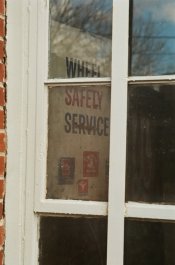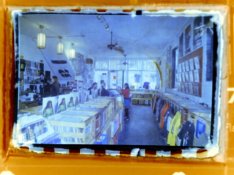handle2001
Member
I've shot two rolls of Fujicolor 200 through my Minolta X-700. I had one roll developed professionally at the drug store lab, and the other roll I developed at home by hand. Both rolls have a strange. subdued color palette. Here is an example photo from each roll. First, the lab-processed roll:

This one is from the roll I developed myself at home and scanned in using a lightbox and digital camera (thus why the image is not as sharp):

The slight blue cast on the home-processed image I can attribute to errors in post-processing the negative after I digitized it, but both images to me have a sort of vintage look that isn't altogether bad, it just isn't what I wanted. My guess is that this is just the profile of this particular film, but I'd like to get other opinions.

This one is from the roll I developed myself at home and scanned in using a lightbox and digital camera (thus why the image is not as sharp):

The slight blue cast on the home-processed image I can attribute to errors in post-processing the negative after I digitized it, but both images to me have a sort of vintage look that isn't altogether bad, it just isn't what I wanted. My guess is that this is just the profile of this particular film, but I'd like to get other opinions.





